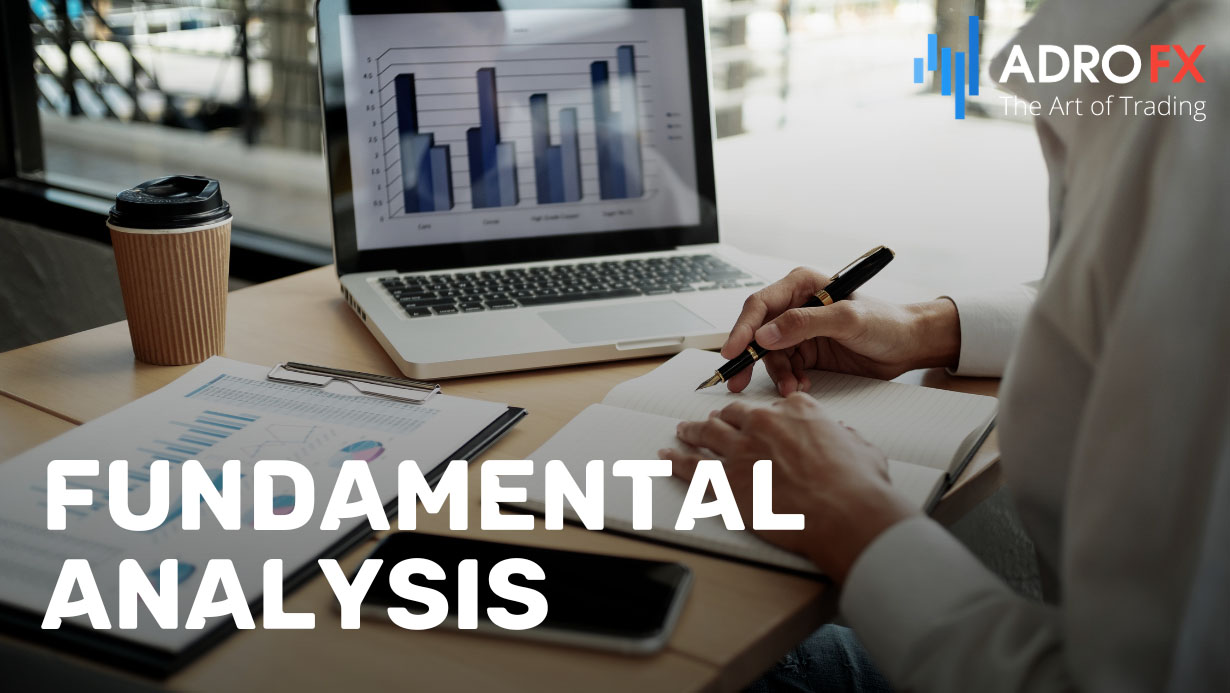Predicting Forex Market Trends: Mastering the Art of Forex Prediction

In the ever-evolving landscape of the business world, forward-thinking is paramount for success. Conversations with accomplished forex traders and investors consistently underscore their proficiency in predicting forex market movements through trend analysis. This article aims to empower you with the knowledge and skills to make informed predictions about the dynamic nature of the foreign exchange market.
Introduction to Forex
Before delving further, let's answer the fundamental question: What is the forex market? In simple terms, it's a global, decentralized marketplace for trading currencies. Moreover, it stands as the world's largest market, processing trillions of dollars in daily transactions. Its key participants include international banks, hedge funds, commercial enterprises, central banks, as well as retail FX brokers and investors.
When it comes to forecasting market movements, a trader must possess a deep understanding of the factors influencing currency exchange rate fluctuations. Keep in mind that there's no one-size-fits-all forex prediction formula; success hinges on your skills, experience, the accuracy of your foreign exchange forecasts, and your commitment to excellence. The five essential factors to comprehend are:
- Economic growth
- Geopolitical factors and political stability
- Monetary policy
- Imports and exports
- Interest rates
By meticulously monitoring events, micro and macro factors, you enhance your chances of successful predictions. However, it's vital to acknowledge that this isn't a straightforward task. Be cautious of purportedly "free forex predictions" on certain websites, as they often lack reliability. Professional FX traders rely on a Forex Calendar to track economic announcements, forecasts, and other critical forex-related information.
Understanding Forex Trends
Being adept at identifying forex trends is a core skill for any forex trader, as it greatly assists in making accurate market predictions. A trend represents the general direction of a market or asset price and can span short, intermediate, or long-term periods. Recognizing a trend can be highly lucrative because it enables you to trade in alignment with it.
In the context of an overall trading strategy, trading with trends is usually the best approach. When the FX market trend is upward, exercise caution when considering positions that go against the prevailing trend. Trends can also extend to interest rates, equities, yields, and other markets characterized by price or volume movements.
To make informed forex predictions, let's categorize trends into three types: uptrend, downtrend, and sideways trend. When the trend ascends on the graph, the chosen currency (e.g., USD) is appreciating in value. However, it's important to note that this might not always translate to a winning forex trend for novice traders. Conversely, when the trend descends on the graph, it signifies depreciation. A sideways trend indicates stability, with currencies neither appreciating nor depreciating.
Familiarity with these trend types is the cornerstone of becoming a master in predicting forex trends, a critical skill for making accurate daily forex predictions.
Types of Forex Analysis
Various approaches exist for analyzing the Foreign Exchange market in preparation for trading. Some traders employ tools like a forex trend detector, a forex trend focus indicator, or other forex trend software. However, this article concentrates on the essential skills that traders should develop to minimize risk and gain a more precise understanding of price movements through analysis.
While the array of analysis methods may appear extensive, the primary goal is to use analysis as a guide to identify favorable trading opportunities. We will now delve into the two main areas of FX analysis and explore them in detail. These areas are closely linked to making sound forex trading predictions. It's essential to note that experimenting with both areas can help you determine which method or combination suits your unique trading style.

Fundamental Analysis
In forex trading, fundamental analysis delves into various factors that shape the FX market. Traders must closely monitor fundamental elements such as gross domestic product (GDP), inflation, economic growth activity, and manufacturing. This form of analysis in forex revolves around assessing the economic vitality of different countries to inform intelligent forex predictions.
Fundamental analysis offers insights into how geopolitical and economic events influence currency markets. For instance, specific figures and statements provided in speeches by politicians or economists are classified among traders as 'concrete economic announcements.' These can wield a substantial influence on currency market movements, with announcements pertaining to the US economy and politics holding particular significance.
This brings us to the essential question of how to forecast forex market movements. Thankfully, economists have devised the standard economic calendar, which produces daily predictions grounded in various economic indicators and recent historical data. Typically, it includes key information such as date, time, relevant currencies, released data, actual data, forecast, and previous data. Certain economic metrics, when unveiled, almost invariably exert a profound impact on FX market shifts. These encompass:
- Interest rates
- Employment situation
- Budget, trade balance, and treasury budget
- GDP
Traditionally, when a country raises its interest rates, its currency tends to strengthen. This occurs because investors redirect their assets to the country in question to capitalize on higher returns. When making a forex prediction, consider these dynamics. Significant declines in employment figures serve as indicators of weak economic activity, which may eventually lead to reduced interest rates, thus negatively affecting a currency.
A country plagued by a substantial trade balance deficit is likely to experience a weakened currency, as there will be a persistent commercial offloading of its currency. GDP serves as a key indicator of economic vigor, with a strong connection between a high GDP figure and expectations of higher interest rates, which bodes well for the respective currency.
So, how can traders leverage the insights above for forex market predictions? First and foremost, keep an economic calendar readily accessible. Then, focus on identifying the prediction indicators that are garnering the most attention, as they will often become the catalyst for future price movements in the forex market. Finally, pay close attention to news revisions, as market conditions can shift rapidly.
Technical Analysis
Technical analysis in forex trading revolves around the meticulous examination of historical market data, primarily price data, in an attempt to forecast future changes in forex trend lines. The underlying principle is that past market patterns tend to repeat themselves in predictable ways, and these patterns, driven by price movements, are known as forex signals. The objective of technical analysis is to identify current market signals by scrutinizing past forex market indicators. This approach aids traders in making daily forex predictions and recognizing potential forex trend reversals. Additionally, technical analysis operates on the assumption that price fluctuations are not random but follow discernible patterns, which tend to persist over a certain time frame.
Traders in the forex market utilize various tools such as volume charts, price charts, and mathematical representations of market data, often referred to as "studies," to pinpoint optimal entry and exit points for trades. This analytical approach not only enhances discipline but also reduces the influence of emotions in a trading plan. It can be challenging to filter out fundamental biases and adhere to predetermined entry and exit points. While no system is infallible, technical analysis equips you with the tools needed for forex daily analysis and prediction, enabling a more objective evaluation of your trading strategy.
Here are the main types of technical indicators:
- Trend Indicators: These indicators smooth out price data to reveal persistent up, down, or sideways trends without additional complexity.
- Strength Indicators: Strength indicators evaluate the market's intensity at a specific price by analyzing the positions taken by various market participants. Volume and open interest are common examples.
- Volatility Indicators: Volatility indicators measure the magnitude of daily price fluctuations, regardless of the trend's direction. Volatility changes are expected to correlate with price changes.
- Cycle Indicators: These indicators identify repetitive patterns in the forex market, often related to recurring events such as elections or seasonal trends.
- Support and Resistance Levels: Support levels represent prices at which markets tend to rise, while resistance levels mark prices at which they typically fall and reverse.
- Momentum Indicators: Momentum indicators help determine the strength or weakness of a trend after it has developed over a specific period.

Forex Trend Pairs: Choosing the Right Fit
Forex markets typically follow trends more consistently than stock markets. This phenomenon is due to the unique nature of forex, driven by macroeconomic trends that often unfold over the years. These trends are prominent in major forex pairs and commodity currencies.
To succeed as a forex trader, having a solid trading strategy is essential, and many experienced traders base their strategies on trends. Currency pairs play a crucial role in this context, as certain strategies work best with specific pairs that trend well together.
Selecting the right currency pairs is pivotal. For instance, range-bound currency pairs like USD/KRW may not warrant close monitoring, as they offer limited potential for trading profits, irrespective of the chosen strategy. Success in forex trading largely hinges on crafting a currency pair list tailored to your chosen trading strategy.
Here are some major currency pairs with different spreads, volatility levels, and other characteristics that may appeal to trend-focused traders:
- EUR/USD: Widely regarded as the most commonly traded currency pair, it also features the lowest spread with most contemporary forex brokers worldwide. This pair is often associated with basic technical analysis and is known for its relatively low volatility, making it suitable for novice traders.
- USD/GBP: This pair experiences significant price swings, presenting profitable opportunities, but also higher risk. It's considered part of the volatile currency group and is favored by traders due to the abundance of online market analysis available.
- USD/JPY: Among the most popular currency pairs globally, USD/JPY is known for its low spreads and relatively smooth trend movements compared to other pairs. It can provide exciting and profitable moments for traders.
Each of these common currency pairs offers tight spreads, except for USD/GBP. With a well-established trend strategy and diligent analysis, each pair presents distinct opportunities for traders. To mitigate the risks associated with trading, exercising sound risk management is paramount to minimize potential losses.
Final Thoughts
In conclusion, mastering the art of forex prediction is an essential skill in the dynamic world of foreign exchange trading. This article has highlighted key factors and strategies to empower traders with the knowledge needed to make informed predictions in the forex market.
Understanding the fundamental aspects of forex, including its participants and the factors influencing currency exchange rates, is the first step in this journey. Economic growth, geopolitical stability, monetary policy, imports and exports, and interest rates all play a crucial role in shaping market trends. Successful traders recognize that there is no one-size-fits-all formula for forex prediction and instead rely on their expertise, experience, and the accuracy of their forecasts.
In the world of forex trading, mastering the art of prediction is an ongoing process that requires continuous learning, adaptation, and disciplined risk management to minimize potential losses. With a deep understanding of market factors and effective analysis techniques, traders can improve their ability to make informed predictions and achieve success in the forex market.
About AdroFx
Established in 2018, AdroFx is known for its high technology and its ability to deliver high-quality brokerage services in more than 200 countries around the world. AdroFx makes every effort to keep its customers satisfied and to meet all the trading needs of any trader. With the five types of trading accounts, we have all it takes to fit any traders` needs and styles. The company provides access to 115+ trading instruments, including currencies, metals, stocks, and cryptocurrencies, which make it possible to make the most out of trading on the financial markets. Considering all the above, AdroFx is the perfect variant for anyone who doesn't settle for less than the best.










